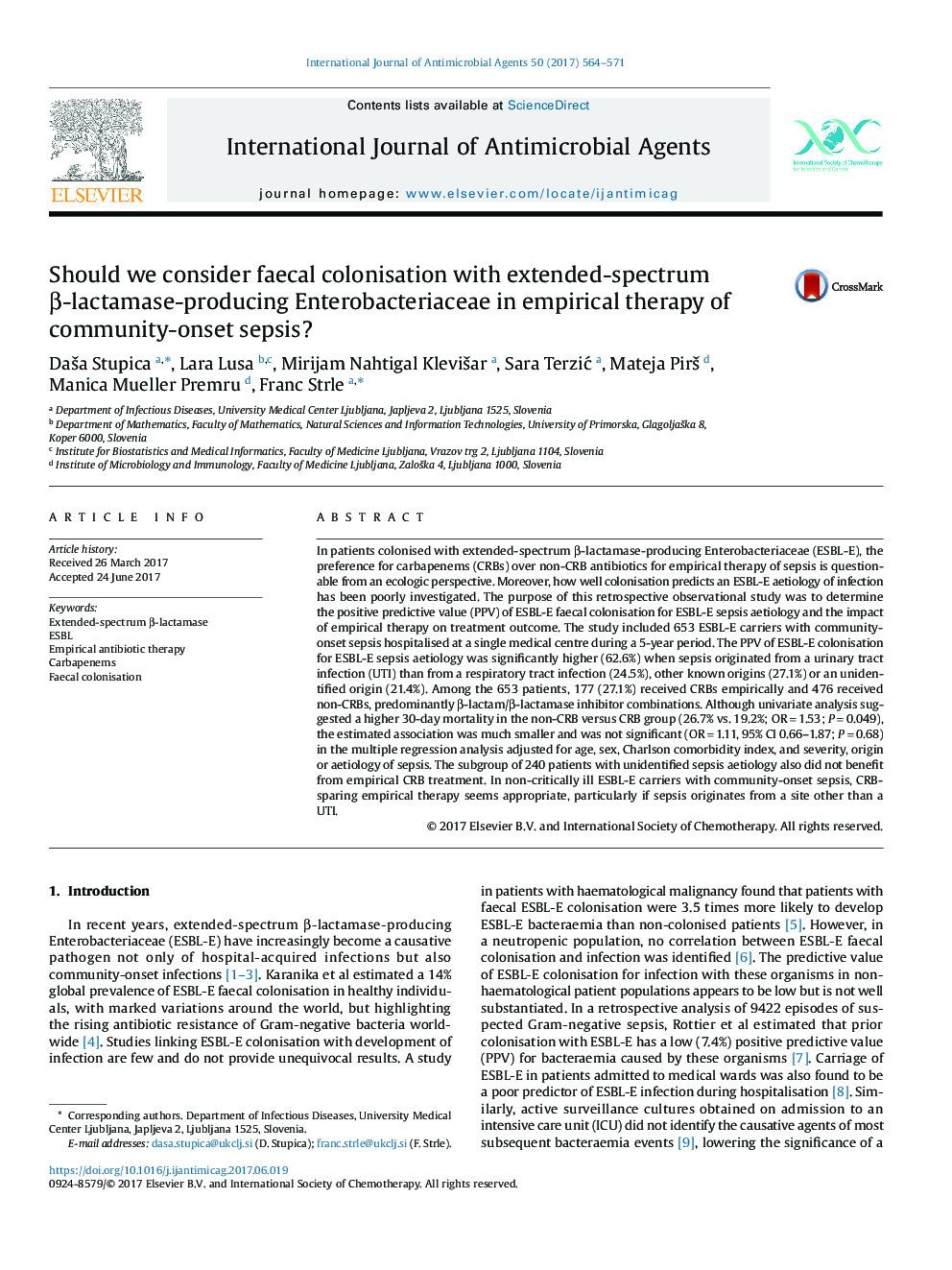| کد مقاله | کد نشریه | سال انتشار | مقاله انگلیسی | نسخه تمام متن |
|---|---|---|---|---|
| 5666896 | 1591736 | 2017 | 8 صفحه PDF | دانلود رایگان |

- In ESBL-producing Enterobacteriaceae (ESBL-E) carriers, the probability of ESBL-E sepsis aetiology was considerable.
- This probability was highest (62.6%) if sepsis originated from the urinary tract.
- 30-day mortality was not higher in the non-carbapenem versus carbapenem empirical treatment group.
- Non-carbapenem empirical therapy in non-critically ill ESBL-E carriers is appropriate.
In patients colonised with extended-spectrum β-lactamase-producing Enterobacteriaceae (ESBL-E), the preference for carbapenems (CRBs) over non-CRB antibiotics for empirical therapy of sepsis is questionable from an ecologic perspective. Moreover, how well colonisation predicts an ESBL-E aetiology of infection has been poorly investigated. The purpose of this retrospective observational study was to determine the positive predictive value (PPV) of ESBL-E faecal colonisation for ESBL-E sepsis aetiology and the impact of empirical therapy on treatment outcome. The study included 653 ESBL-E carriers with community-onset sepsis hospitalised at a single medical centre during a 5-year period. The PPV of ESBL-E colonisation for ESBL-E sepsis aetiology was significantly higher (62.6%) when sepsis originated from a urinary tract infection (UTI) than from a respiratory tract infection (24.5%), other known origins (27.1%) or an unidentified origin (21.4%). Among the 653 patients, 177 (27.1%) received CRBs empirically and 476 received non-CRBs, predominantly β-lactam/β-lactamase inhibitor combinations. Although univariate analysis suggested a higher 30-day mortality in the non-CRB versus CRB group (26.7% vs. 19.2%; ORâ=â1.53; Pâ=â0.049), the estimated association was much smaller and was not significant (ORâ=â1.11, 95% CI 0.66-1.87; Pâ=â0.68) in the multiple regression analysis adjusted for age, sex, Charlson comorbidity index, and severity, origin or aetiology of sepsis. The subgroup of 240 patients with unidentified sepsis aetiology also did not benefit from empirical CRB treatment. In non-critically ill ESBL-E carriers with community-onset sepsis, CRB-sparing empirical therapy seems appropriate, particularly if sepsis originates from a site other than a UTI.
Journal: International Journal of Antimicrobial Agents - Volume 50, Issue 4, October 2017, Pages 564-571